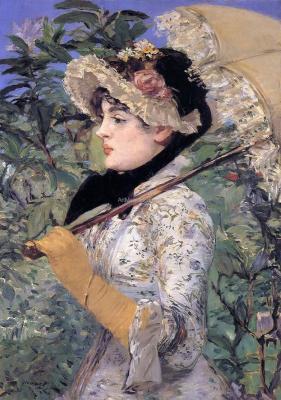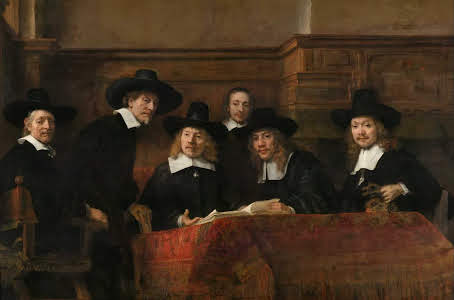A painting where the inferences to be drawn as those inform the meaning of the painting and are directly opposite from the meaning a viewer might expect is in John Singleton Copley’s “Watson and the Shark”, first exhibited in 1778, which is sometimes interpreted as an allegory of the rise of the American Republic, the people in the boat representing the various strands of the American community, while the boy in the water is America and the shark is Great Britain, out to destroy the Republic. Or else, as is more usually the case and was so seen when it was first shown, the picture is a tribute to religious salvation: difficulties are overcome by courage and solidarity. But listen to the silences of the painting. The people in the boat are agape with wonder or horror but are not shouting, because there are no such expressions on their faces or mouths wide open. The shark seems dead in the water and so makes no sound and the boy appears to be unconscious and so also makes no sound. So what is being conveyed is a mood where great danger is over, the figures in the picture in the aftermath of some dramatic moment, trying to absorb it, each one within their own solitude. This is the opposite of what Lessing will say is the heart of sculpture, which is the moment before something awful happens, but rather is the moment after a disaster, when its impact is being communicated to the people who observed it, this moment of a drama also caught by Poussin in his noisy way in “The Parting of the Red Sea”, where Egyptian charioteers are washed up on the beach by still noisy waves while some Hebrews are still making their way onto the beach with, presumably, their heavy breathing and clattering steps accompanying the waves breaking upon them.
So what is the significance of “Watson and the Shark” other than that it intrudes upon the timeline in its own way, portraying the moment after rather than the moment before the climactic event? It is, I think, a point that is not political, however easy it is to see the little dingy as the ship of state. It is a sense of the deeps, even here in Havana Harbor, where the event that inspired the painting took place: the shark is one of the demons of the deep, the boy one of the victims of the deep, a victim of circumstance because the shark had found him. All onus belongs to fate. So the people in the boat are looking at their own destiny, whether they are black or white, and of whatever profession. They too will be dragged down into the sea. That is their eventual doom. I therefore read the painting as not about the Enlightenment or religion but about the nature of life and think there is no reason to think the artist has been documenting the political moment rather than what is always the moment, a modern version of a dance of death painting, the grim reaper coming for all of us.
Some great painters are noisy and that explains what they are up to. Brueghel was particularly noisy. You can hear the laughter and music and bustle in his “The Wedding Dance” just as you can hear the crunch of the snow under the feet of the hunters returning to their town in “The Hunters in the Snow” and you can hear the rustling of the sheaves and the buzz of the flies in “The Harvesters” as the farmer who is taking a post lunch snooze under a tree, even down to his snores. Brueghel provides these sound effects via the viewer’s association of these picture elements with sounds, because Brueghel is giving a realistic account of the fullness of everyday life, even if some of his figures are exaggerated, that snoozing farmer a bit oversized, but not much more so than his fellow harvesters would notice.





